Live photos of Nokia 6600 Fold
 | 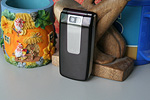 |  |
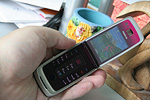 |  | 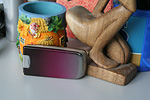 |
Table of contents:
- Positioning
- Design, size, controls
- Display
- Keypad
- Battery
- Memory, Memory cards
- Performance
- Camera
- USB, Bluetooth
- Themes, applications, games
- Impressions
Sales package
- Handset
- Wired stereo-headset (WH-501)
- Battery (BL-4CT)
- Charger (AC-4)
- USB data cable (CA-101)
- Nokia 512 MB microSD Card MU-28
- Pouch
- User guide
Positioning
Nokia has rolled out a new line-up of fashion-savvy solutions that sway more towards women than man positioning-wise. The name they gave it, “Beautiful to use” resembles Samsung’s own series of handsets going by the name of “Beautiful Technology”, although that was around a year ago. It’s quite amusing to see how different manufacturers rivaling on the phone market embrace same concepts and wordings. As far as the Nokia 6600 Fold goes, they are running with a slightly different idea here, the gist of which becomes apparent momentarily once you cast a glance over the phone. For Nokia this offering is one of the first attempts to deliver a handset clad in quaint materials to the mid-tier. And it takes no rocket scientist to see that Nokia has taken cues from other manufacturers along the way.
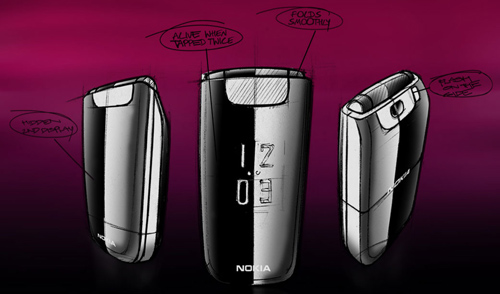
Some will claim that the idea of electromagnetic opening mechanisms, mimicking those that found in the Motorola PEBL, is right one the surface – well, perhaps. However, the design where the 6600 Fold’s outer display sits under a plastic panel blurring out its contours gives out the source of inspiration outright – the Motorola U9, and, to a lesser extent, the Sony Ericsson Z610i/Z750i. In effect, this product has been influenced by Motorola’s designers all the way. On a mini web-page devoted to this series of phones, Nokia’s designers speak on the reasons why they’ve adopted this design and where the inspiration came from. I was hooked by the claim that all materials were picked in a way to make the front fascia seamless. Deja vu? I remember hearing exactly the same words at the Motorola RAZR2 V8 launch event in London a year ago, and then the same thing for the Motorola U9. As far as Motorola, that’s their pride and joy – indeed, the company has one of the world’s best team of designers that regularly gives birth to various materials and concepts that get picked up by other makers later on. There is no irony in these words – you always want to copy the best, but the one thing to keep in mind is change, as you need to introduce some unique touches to your own end product, to distinguish it from the original.
The 6600 Fold is no copycat, actually Nokia isn’t the type of company to do that. On the contrary, they revisit the ideas underlying the first and second generations of the PEBL. Nokia positions the 6600 Fold as the main rival to the Motorola RAZR2 V8 on the European market, which seems somewhat far-fetched – these two are worlds apart in terms of materials, design, functionality and other things, bar pricing. The V8 is definitely a higher-class product, although the brand of Nokia has more power and loyalty to it. The phone the 6600 Fold does rival is the Motorola U9, so we should rather compare these two in the first place.
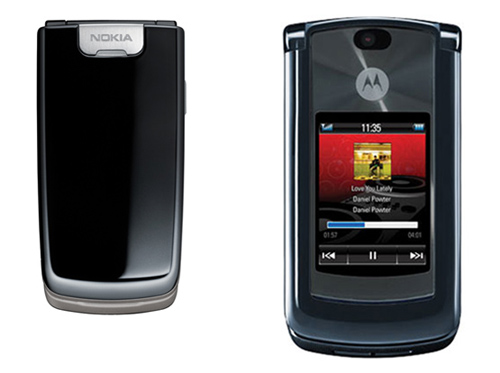
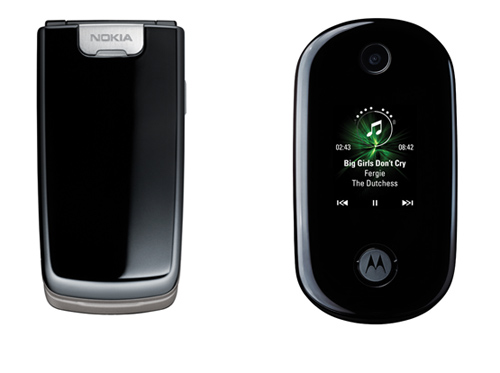
But, in view of the dearth of the Motorola U9 on most markets, there will be no clash, no competition. This way, the 6600 Folds will stand alone with no real alternatives on the horizon, being a designer solution with unique looks, even with some design cues taken from Motorola.
Design, size, controls
The key element of the 6600 Fold’s design is the front fascia clad in mirrorish plastic. The phone is available in two flavors – black and red, although in both cases the casing’s hues get brighter as you go from the top edge to the base. As you’d expect from this type of plastic, the Fold’s face is very prone to smudge and grease.

The plastic here is relatively sturdy, but picks up a slew of tiny scratches in no time, which, however, keep low profile most of the time, unless you start examining the handset. How long will this coating last? It remains to be seen, although there is no reason to expect poor performance from the 6600 Fold on this front – in fact, this type of plastic has stood the test of time on other products.
Video, looks and menu of the Nokia 6600 Fold (wmv, 32,8 mb) >>>

The phone employs a sensor that allows bringing the clock screensaver up to the outer display by tapping on the front fascia, which is a neat feature that made its first appearance with the Nokia 8800 Arte (and is spreading across the rest of the portfolio). But beware – should you use it fairly often, the number of scratches and scuffs on the front will increase exponentially. While the Arte, all thanks to its materials, didn’t have such a problem, as far as the 6600 Fold is concerned, this is definitely a threat.

The top part of the panel also houses a light indicator; you can enable some light effects, which are pretty much run-of-the-mill, though, nothing special about it.


The outer display is brilliantly fit into the front fascia – its outlines remain invisible even in the sun. The 6600 Fold makes use of an OLED unit that shows only white and isn’t all that bright given the plastic layer sitting on top of it. On the other hand, the clock screensaver is discernible and caller’s number isn’t hard to read at all. Also, there are some sizable service indicators like missed messages, battery status, etc. The display measures 1.36 inches from corner to corner and has a resolution of 128x160 pixels (21.5x26.9). It gets washed out in the sun, and we mean completely washed out – no matter what angle you pick, you won’t see the display’s contents.







The sides are free of controls, barring the release button on the right – basically, pressing it will flip the phone open. The first thing you come across inside is the magnet perched right under the numeric pad. The bad news is that the 6600 Fold can be closed only manually; though you can also flick it open without the release button too, and the only different will be a slightly worse performance of the spring-loaded mechanism. Opening the 6600 Fold manually will prove to a pain to those without nails, for there is no dent or thumbrest on it.

The left-hand side plays home to the microUSB socket used for plugging in headsets and data cables. The opposite side features Nokia’s trademark slim charger slot. The base of the 6600 Fold houses the lanyard eyelet, but to attach one you will need to remove the back cover, which isn’t particularly comfortable.

On the back, right where the 2 Mpix camera lens sits, there is a slope that makes the folder seem a tad longer than it is when open, which is definitely a good thing. However, as far as the camera’s usability goes, it’s a clear letdown – oftentimes you finger will cover the lens, so you will have to find a better way to grasp the handset and there is no way you can take shots with the flip closed.
The angle between the two halves of the 6600 Fold is slightly smaller than that of the Nokia 6555 that even had a name for it – “smoothback”. While here there is no special name for it, the folder matches the contour of your face very well, delivering a pretty much resembling fit. The 6600 Fold’s rear is made of plastic with a metallic insert.




It is clear that Nokia has put many hours into perfecting the 6600 Fold’s materials – at some point in time it seems like it’s made, at least partly, of metal. This illusion is lent credence by the handset's weight, which is 110g, and so makes a statement, which one would think it wouldn't. It’s a nice feeling, and the truth is, Nokia’s designers, ever since the times of Frank Nuovo, have believed that weight and premium segment are synonyms (while Frank is no longer with Nokia, his ideas live on and are passed to new people in the team).


The handset measures 87.7x44x15.9 mm, which is pretty average and by no mean miniscule. However, the 6600 Fold readily slips into just about any pocket or purse.

As far as unusual things go, the 6600 Fold comes equipped with a forward-facing camera for video conferencing (sitting right next to the earpiece along with the ambient light sensor that’s in charge of the display's and keypad backlight).

Display
The 6600 Fold’s main display measures 2.13 inches from corner to corner, boasts a resolution of 240x320 pixels (32.4x43x2 mm) and enjoys OLED technology with 16 million colors, along with juicy picture and great viewing angles. This screen, unlike the one installed on the outside, can handle the sun in a convenient fashion and remain pretty readable. The display accommodates up to 8 text and 3 service lines all written in a convenient font. Just like you’d expect, you can alter the font size in certain menus (like Messaging, where amplified fonts do much better). The display’s brightness is taken care of by the ambient light sensor, plus you can turn to the settings menu too.

Keypad
All keys are made of glossy, tactile plastic. On a more interesting note, the row in the middle is somewhat rough and differs from the neighboring keys texture-wise. The 6600 Fold’s buttons are quite responsive, and lit in relatively dim pink. All in all, this keypad is a treat to handle. Oftentimes, it’s the keypad that spoils the overall impression of a phone, not matching its fashion-savvy looks, but thankfully this is not the case with the 6600 Fold.




Battery
The handset utilizes a 860 mAh Li-Ion battery, rated for 300 hours of standby and 4 hours of talktime. In Moscow the 6600 Fold lasts around 2 days at 3 hours of calls and up to 5 hours of music. It takes the battery just shy of 2 hours to charge from empty to full.

We got a shade more than 10 hours and 20 minutes of continuous music with the 6600 Fold (in earphones).
Memory, Memory cards
The microSD memory expansion slot (cards up to 8 GB are supported) is perched underneath the battery. The handset also comes equipped with 15 Mb of built-in memory.
Performance
The phone is a typical offering for its generation – no bells and whistles here. Compared to Sony Ericsson’s solutions, the 6600 Fold is quite a mediocre performer.

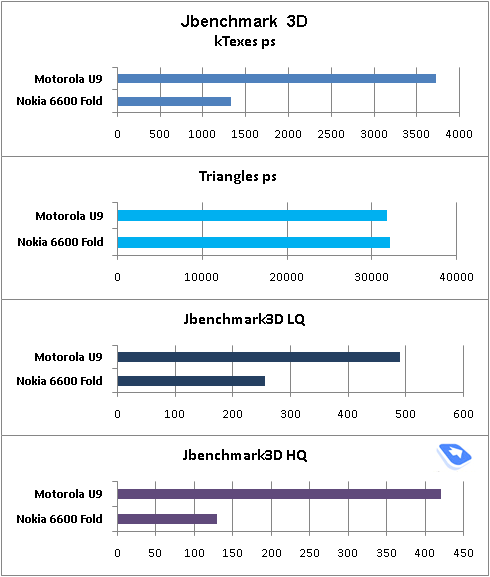
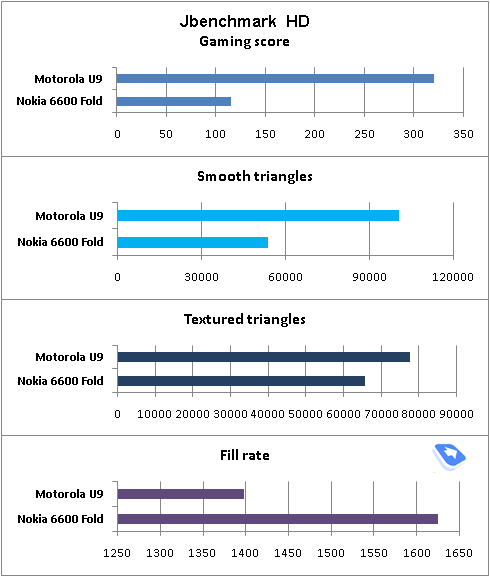
Camera
The camera module hasn’t changed much compared to other affordable Nokia-branded solutions – it still boasts a 2 Mpix CMOS matrix without autofocus. There are several shooting modes available – high, normal, basic (the compression level is what sets them apart). Also, the 6600 Fold allows for shots in one of the six resolutions – 1600x1200, 960x1280, 600x800, 480x640, 240x320, 120x160. You may disable its flash, although there is no way to use it as a flashlight. As far as special effects go, there are Grey Scales, Sepia and Negative. The camera comes laden with 8x digital zoom, however you’ll never get clear or detailed shots using it.
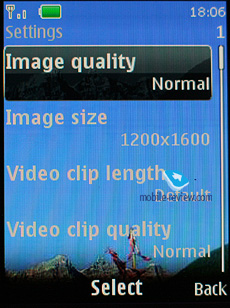
 |  |
| (+) maximize, 1200x1600, JPEG | (+) maximize, 1200x1600, JPEG |
 |  |
| (+) maximize, 1200x1600, JPEG | (+) maximize, 1200x1600, JPEG |
 |  |
| (+) maximize, 1200x1600, JPEG | (+) maximize, 1200x1600, JPEG |
The phone can also record video at 640x480 to 128x96 (including 352x258, 176x144) in 3GPP, which is nothing new. While shooting in the 640x480-pixel resolution, the 6600 Fold allows only for 13.78 FPS, in all other modes it puts up 15 FPS on the nose. You can also watch video clips in full-screen mode.
Video sample (3gp, 269 kb) >>>
USB, Bluetooth
USB. The Nokia 6600 Fold comes with the microUSB socket, housed on the left edge of the phone. This socket is used for plugging in a data cable or headsets (the phone starts charging up when connected). The vendor says the handset supports USB 2.0, and it does indeed, in the USB Mass Storage mode the USB connection offers 500-600 Kb/s (topping out at 800 Kb/s). Upon successful connection you can pick one of the following modes: USB Mass Storage, Nokia Mode (PC Studio) or Printing&Media.
Bluetooth. The handset comes with EDR-enabled Bluetooth 2.0. The following profiles are supported:
- Dial-Up Networking Profile
- Generic Access Profile
- Generic Object Exchange Profile
- Object Push Profile
- Serial Port Profile
- Handsfree Profile
- Headset Profile
- Synchronization Profile
- Basic Image Profile
- File Transfer Profile
- HID (host) Profile
- Stereo Advanced Audio Distribution Profile
- Advanced Audio/Video Remote Conference Profile
The Bluetooth implementation is, as always, nothing to complain about, we encountered no issues with handling this type of connections. The stereo-headset also worked fine.
Themes, applications, games
If you are keen on S40 5th edition’s standard set of features and applications, you better read you dedicated write-up on that.
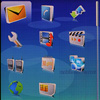 |
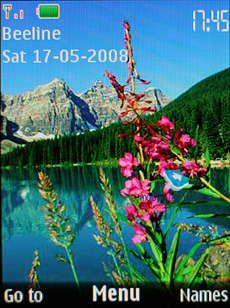 | 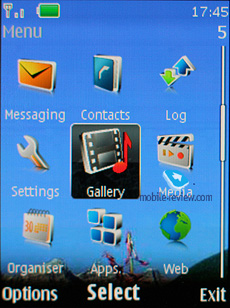 |
The handset boasts a number of themes that substantially vary its looks, seem to be well-elaborated, meshing with the handset’s overall image.
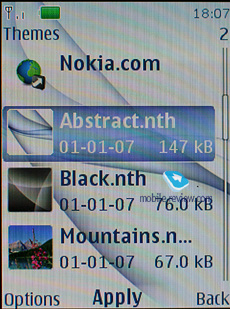 | 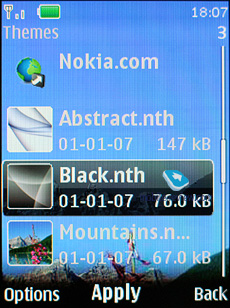 |
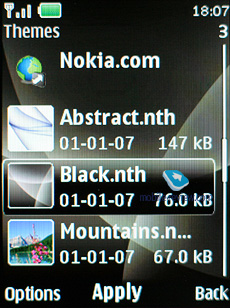 |  |
 |  |
 | 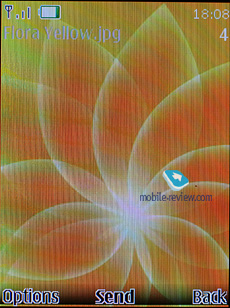 |
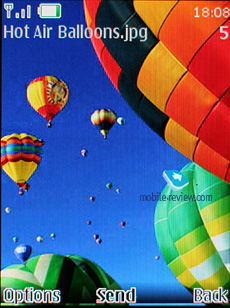 |  |
 |  |
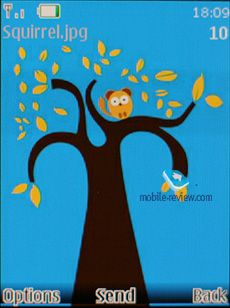 |  |
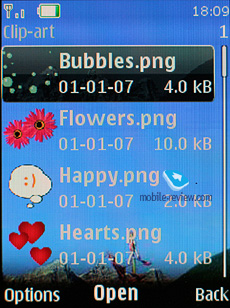 | 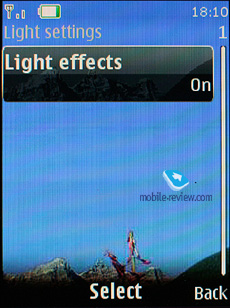 |
 |  |
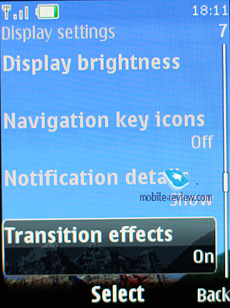 |  |
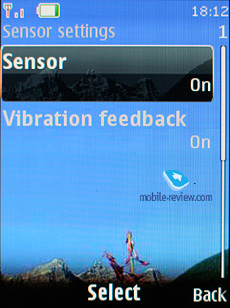 | 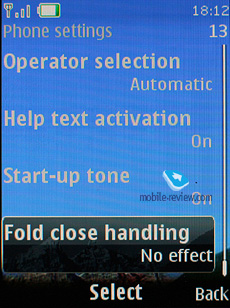 |
The handset comes preinstalled with an array of games: Backgammon II, Golf Tour, Highroller Casino, Rally 3D, Sudoku, Snake III.
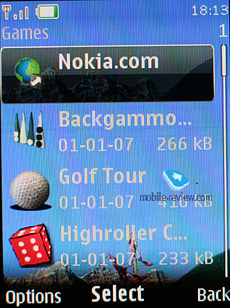 | 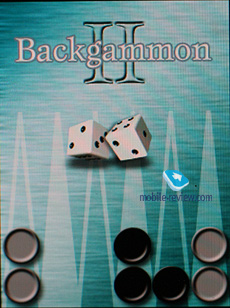 |
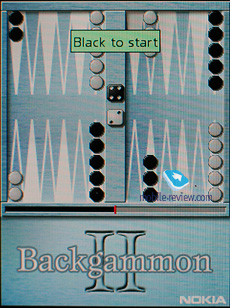 |  |
 | 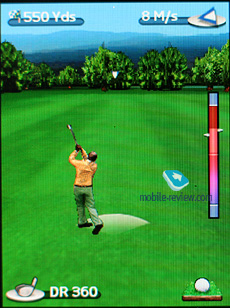 |
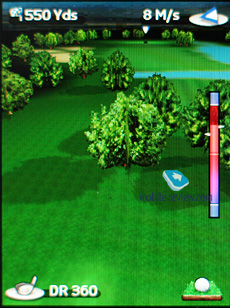 | 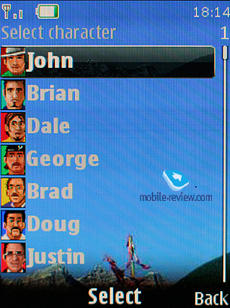 |
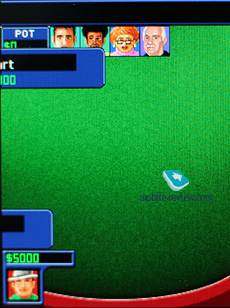 | 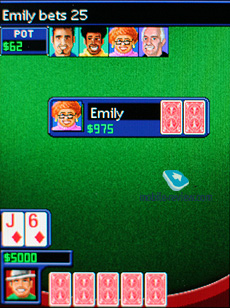 |
 |  |
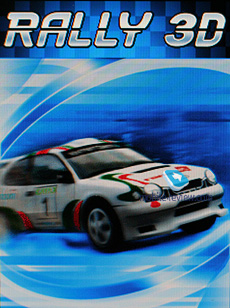 | 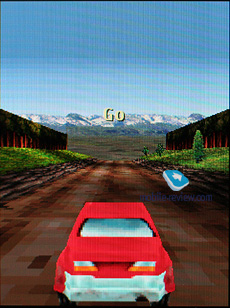 |
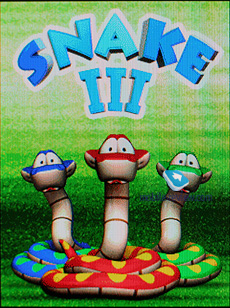 | 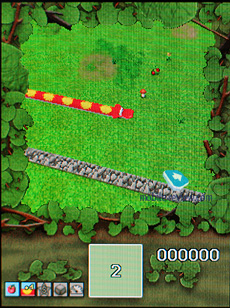 |
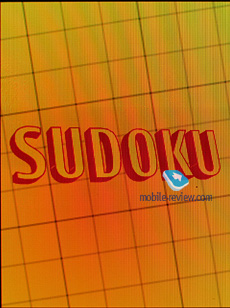 | 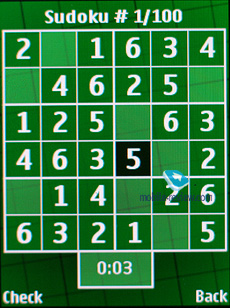 |
The Applications section includes such standard functions like Converter, Opera Mini, World Clock, Yahoo! Go, Widsets, Download!, Flickr, Messenger (Windows Live Messenger). Some markets may also see other applications installed on the 6600 Fold. New Java applications can be uploaded over the air or directly into the handset’s memory (no size limits).
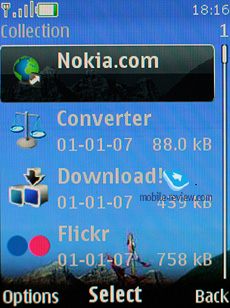 | 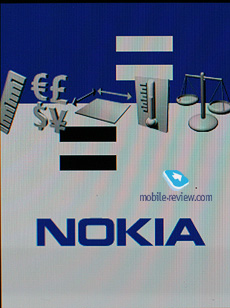 |
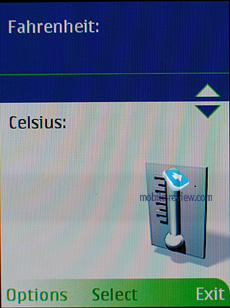 | 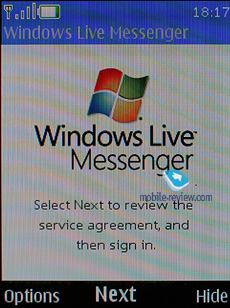 |
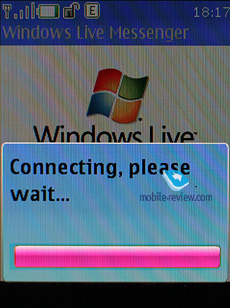 | 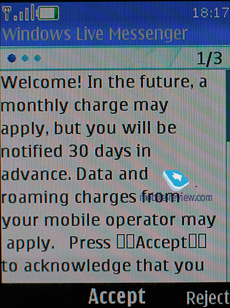 |
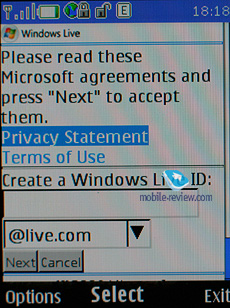 | 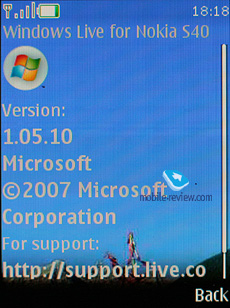 |
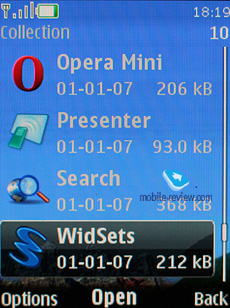 | 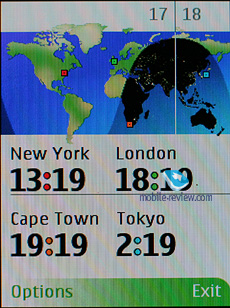 |
 |  |
 |  |
Maps – maps are coming to S40 in the same way they are currently available with S60-powered devices, however, they are pretty much pointless on devices with no inbuilt GPS receivers, as we really doubt you will go to all the trouble of connecting an external GPS module. In my opinion, Google Maps would fit the 6600 Fold better. However, solutions carrying a GPS receiver on board will squeeze a lot more out of Nokia’s native application, thankfully, its functionality and design are the same as those found in S60.
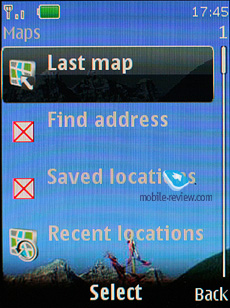 | 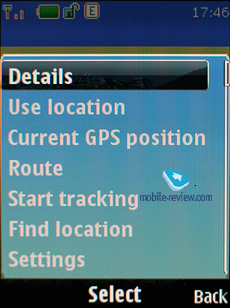 |
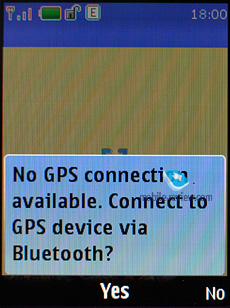 | 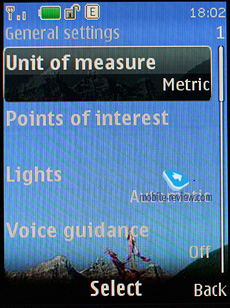 |
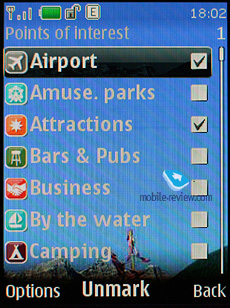 | 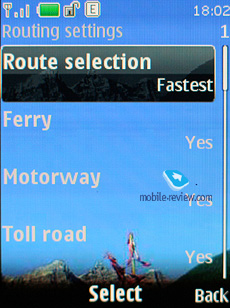 |
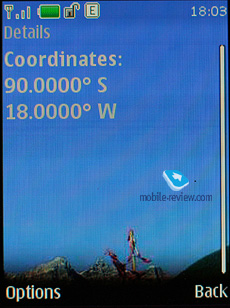 | 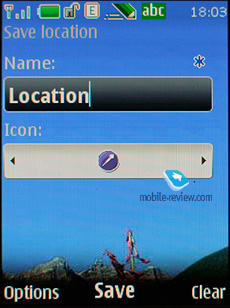 |
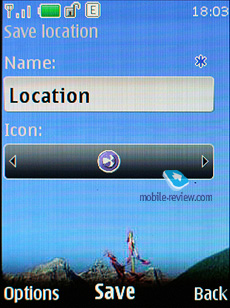 | 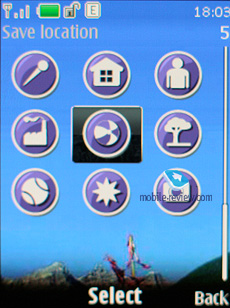 |
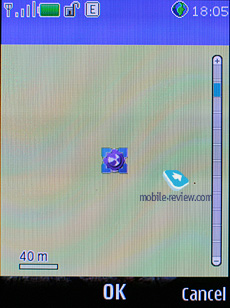 | 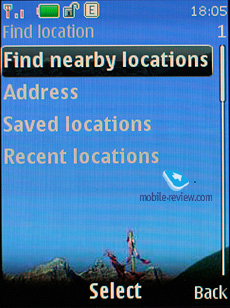 |
Impressions
As far as reception quality goes, the 6600 Fold is pretty good – overall it’s no different from other Nokia-branded solutions. The loudspeaker’s volume is average, even lower than that of some other Nokia’s offerings, and occasionally it falls flat in really noisy environments (but, it really depends why tune you currently use for your ring tone). The 6600 Fold’s vibro alert, on the contrary, is nothing to complain about.
With its price tag of 275 Euro, the 6600 Fold is an affordable, yet very likable (as far as its looks go) solution. Plus, it’s more of a feminine handset, so the audience ratio will revolve around 80 to 20 not in favor of men, and while in some regions the ratio may well shift back and forth, that’s what the big picture will look. Its tap commands add some special flavor to the phone and effectively put it in one boat with the Nokia 8800 Arte – using this feature you can disable the alarm clock, mute incoming calls and so forth. Speaking for myself, I must say that I liked the way the 6600 Fold is built, it feels like a very robust device, even though the materials it employs are nothing out of this world. Compared to the Motorola U9 materials-wise, the Nokia 6600 Fold stands strong and trumps the former hands down. But as far as other fronts are concerned, the 6600 is no match for the Motorola’s solution, all thanks to the latter’s mind-blowing screensavers for the secondary display, lighter price tag and comparable functionality (since there is no GPS, we’ll discount the maps in the 6600 Fold). However, on the downside, the U9 is more exposed to wear and tear, plus the plastic on its face is softer and more fragile. But still, with its lighter price tag, the U9 is more than an appealing choice; nonetheless there are enough users out there who are in the market for this type of phone and some of them need only Nokia, so both handsets will enjoy some sales.
Among the letdowns of the Nokia 6600 Fold is the outer display’s poor performance in the sun – it gets completely washed out; so, it turns out that the maker has gone for style over substance, which is not a rare thing these days.
On the upside, it comes preinstalled with a good roster of games, Flikr support (first time ever on an S40 device, although few will really use it – most of those who really need it already have S60-powered phones in their pockets) and Windows Live Messenger (for some markets it’s a decent offering with no counterparts out there).
We can’t say the 6600 Fold has what it takes to produce a WOW-effect, even the electromagnetic opening mechanism is usually met with no hype or enthusiasm. But, on balance, it’s a well-rounded fashion-conscious solution. As its price goes down, its popularity index will soar, or at least, substantially increase. Fitting the mold set by other players Nokia is heading towards highly specialized devices in an effort to divide the market up into small niches. This gives other makers a chance to come up with strong offerings too, since “all-in-one” solutions don’t have a wide range of price segments to hope on and by definition can’t be widely adopted, so step by step they are forgoing this device class. This is certainly a pity.

0 Responses to "Review of GSM/UMTS-handset Nokia 6600 Fold"
Post a Comment